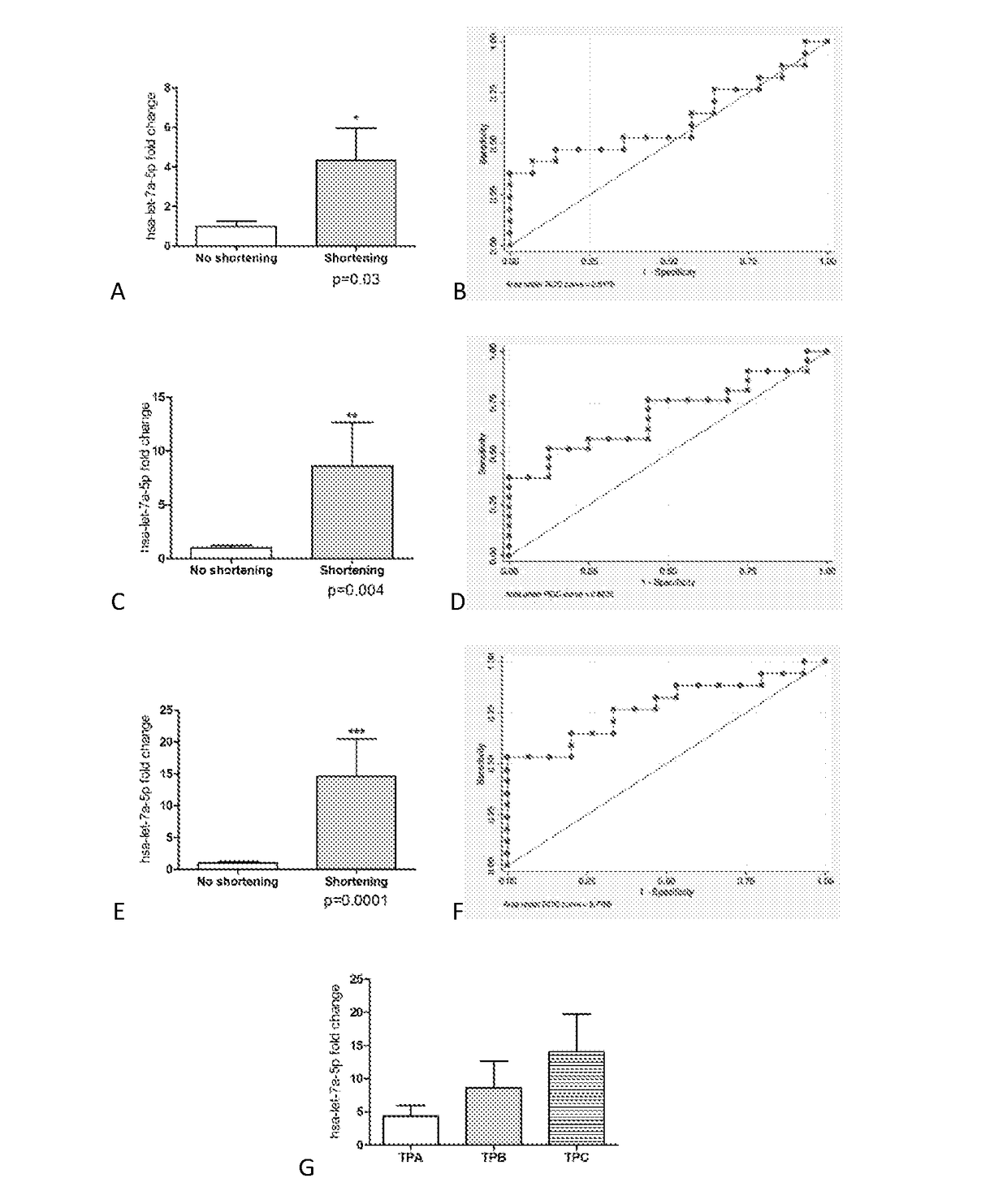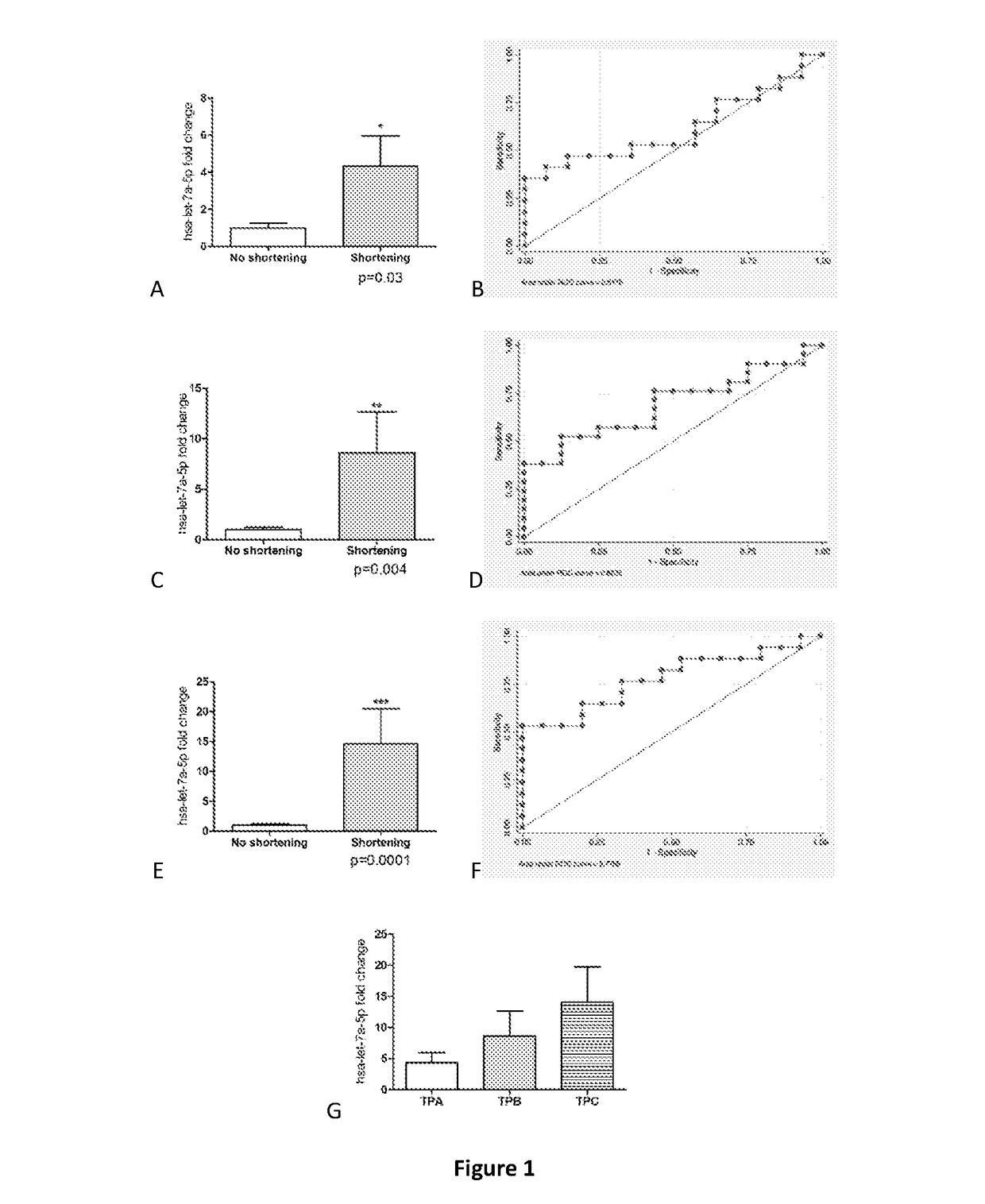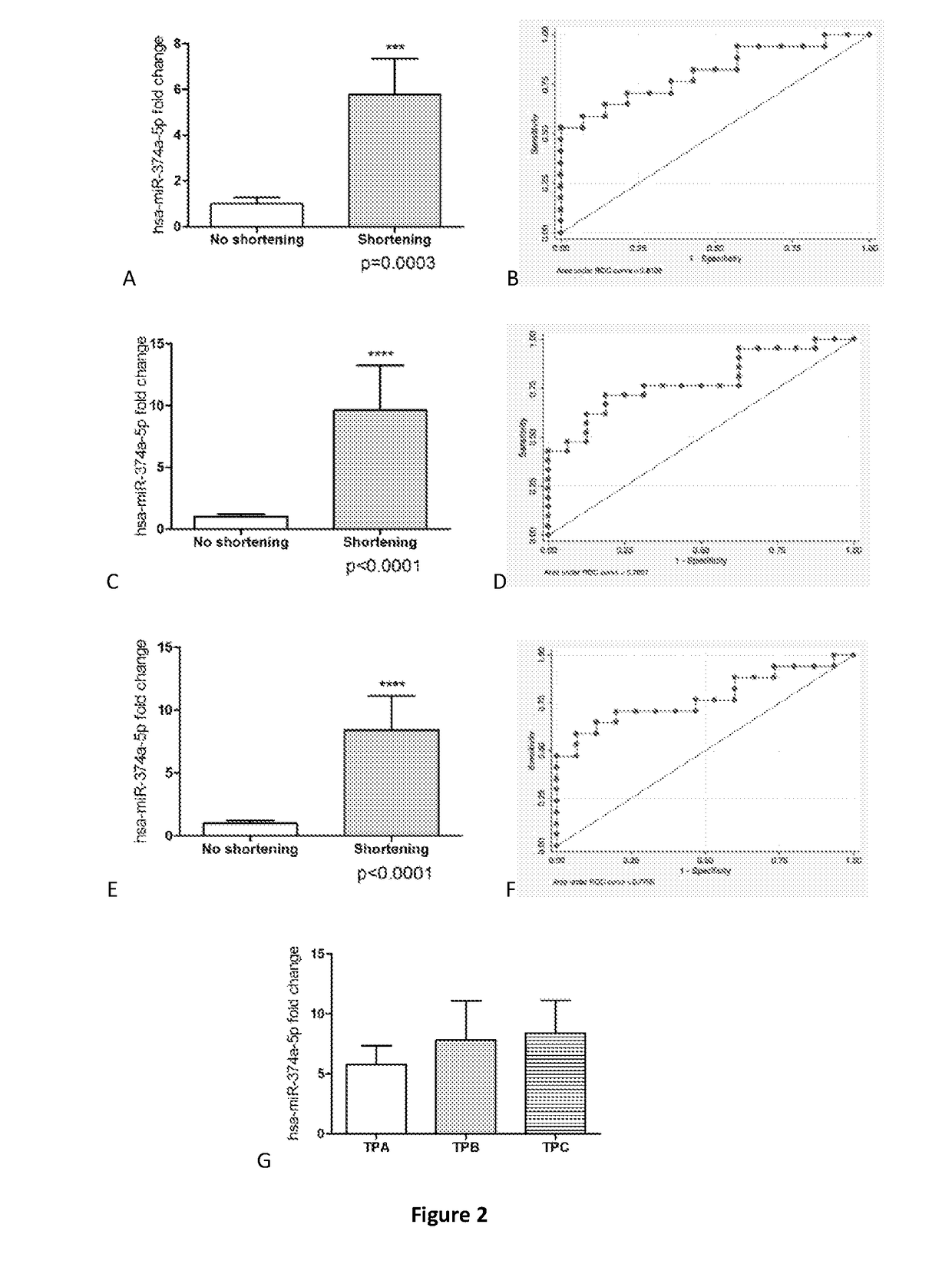Method for predicting cervical shortening and preterm birth
a cervical shortening and preterm birth technology, applied in the micrornas field, can solve the problems of premature preterm labour, unpredictable and unpreventable, and further softening and shortening of the cervix
- Summary
- Abstract
- Description
- Claims
- Application Information
AI Technical Summary
Benefits of technology
Problems solved by technology
Method used
Image
Examples
example
Materials and Methods
Sample Collection and Study Design:
[0129]Following ethical approval, whole blood samples were collected from pregnant women attending the dedicated prematurity surveillance clinics at St. Mary's and Queen Charlotte's and Chelsea Hospitals, London. Blood was taken at three different time-points during pregnancy; 12+0-14+6 (time point A), 15+0-17+6 (time point B) and 19+0-21+6 (time point C), and stored. Approximately 3 ml of whole blood was obtained. The samples were placed on ice immediately and centrifuged at 1300 g for 10 minutes at 4° C. within 30 min of collection. Isolated plasma was stored in 1000 μl aliquots in natural RNAase free microtubes at −80° C. Samples demonstrating macroscopic haemolysis were discarded. Following delivery, samples were allocated to phenotypic cohorts depending on whether women went on to exhibit either cervical shortening and preterm delivery (n=25), cervical shortening and term delivery (n=31) or no cervical shortening with term...
PUM
| Property | Measurement | Unit |
|---|---|---|
| birth weights | aaaaa | aaaaa |
| real time polymerase chain reaction | aaaaa | aaaaa |
| real time polymerase chain reaction | aaaaa | aaaaa |
Abstract
Description
Claims
Application Information
 Login to View More
Login to View More - R&D
- Intellectual Property
- Life Sciences
- Materials
- Tech Scout
- Unparalleled Data Quality
- Higher Quality Content
- 60% Fewer Hallucinations
Browse by: Latest US Patents, China's latest patents, Technical Efficacy Thesaurus, Application Domain, Technology Topic, Popular Technical Reports.
© 2025 PatSnap. All rights reserved.Legal|Privacy policy|Modern Slavery Act Transparency Statement|Sitemap|About US| Contact US: help@patsnap.com



